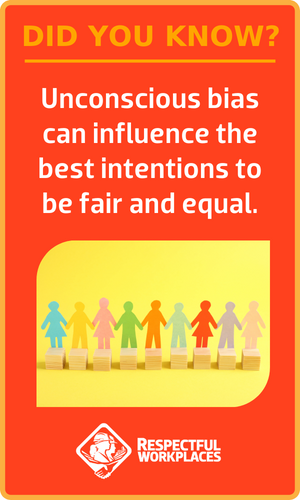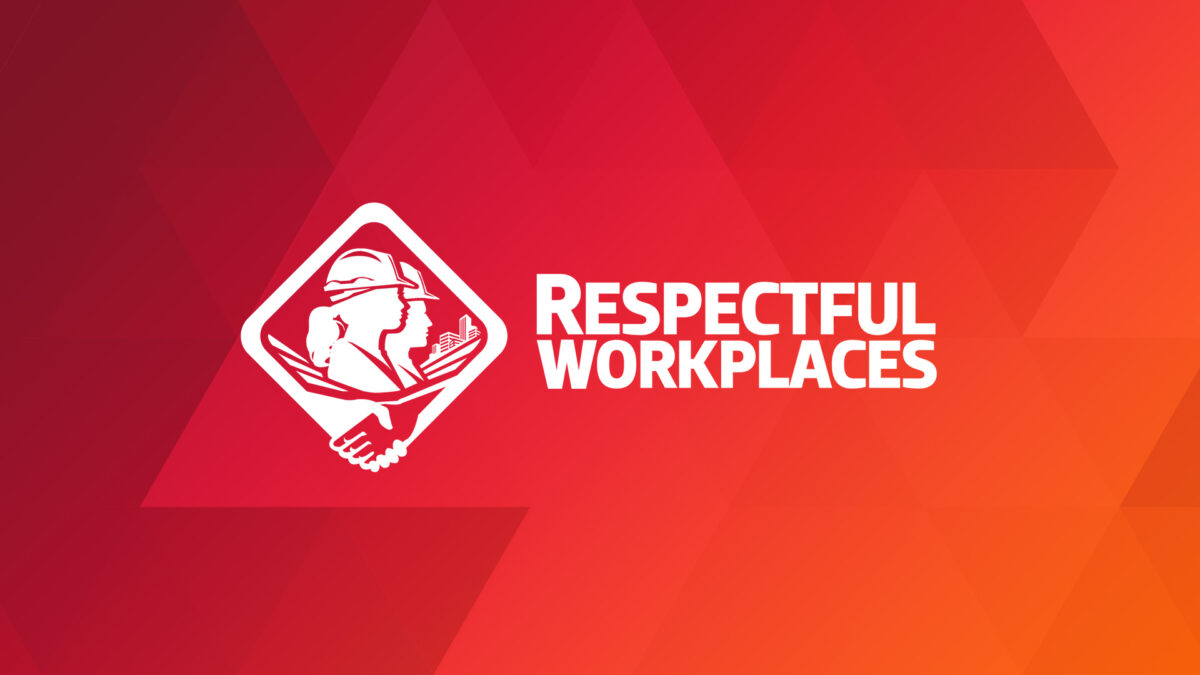Does your organization understand how unconscious bias can impact leadership decision making?

Most leaders and managers want to have organizations that are based on merit, where potential and performance are recognized and rewarded. Research shows that when workers feel they are treated fairly, their ideas and opinions matter and they have equal opportunities for good job assignments and career growth, they are more engaged, innovative, and more likely to stay at their organizations.
However, the intent to create a fair and equal organization is not always matched by the outcome. For example, a study by Catalyst Canada found that 52% of People of Colour in the workplace experience high levels of emotional stress or, as referenced in the research, emotional tax. This is the combination of feeling different from peers at work because of demographic characteristics such as gender, race and/or ethnicity, and the associated effects on health, well-being, and the ability to thrive at work. (See blog #64 for an in-depth discussion of emotional tax.)
In a study of Black professionals, researchers found that 58% of Black professionals compared to 15% of white professionals experience microaggressions in the workplace. These are the small, negative behaviours that tell an individual they are not equal members of the organization, such as being excluded from meetings relevant to a person’s job, being excluded or passed over for career growth opportunities, and failing to provide one-on-one job performance reviews.
What is creating this gap between intent and impact? The answer is unconscious or unintentional bias. We are exposed to incredible amounts of information every day and our conscious brain cannot make sense of all of that information. This leads us to use mental shortcuts, primarily in the form of categories stored in our unconscious mind that allow us to make quick, automatic decisions. Unfortunately, this information is frequently full of stereotypes and misinformation that create unintended biases.
Furthermore, these biases do not remain in our minds; we act on them. We use these shortcuts to help us make decisions about people, such as who has potential and who should be promoted. Research has found that our unconscious mind works to maintain stereotypes and reject contradictory information. Even if we don’t believe a stereotype consciously, old stereotypes are continually reinforced in ways that make it difficult to effectively change the information in our unconscious mind.
Because of their influence throughout an organization, it is critical that leaders recognize and address their own unconscious bias. Committed leaders recognize that they won’t be able to make decisions about people that are based solely on merit if they are unaware of their own biases. The only way to separate bias from behaviour is to make unconscious bias, conscious.
Here are eight types of unconscious bias that may be influencing your decisions:
- Affinity bias: We tend to relate more easily to people who share similar backgrounds or experiences; often, we feel a higher level of comfort with those like us. This bias is often the basis of hiring for “culture fit” rather than an individual’s skills and abilities.
- Confirmation bias: We tend to focus on, search for, interpret, and remember things that confirm our preconceptions and stereotypes.
- Group attribution error: We tend to believe that characteristics of a member of an under-represented group are reflective of all members of that group. For example, the only member of an under-represented group in a meeting is asked to speak for all members of the group.
- Naïve realism: We tend to believe that we are seeing life objectively, when in fact we have a subjective view of reality that is based on our own experience. This bias can cause us to be unaware that others have a different life experience than we do. As a result, leaders may not even think to ask what life at their organization is like for people with different genders, backgrounds, and circumstances.
- Negativity effect: When evaluating the causes of behaviours of a person we dislike, we will attribute positive behaviour to outside causes such as luck, and negative behaviour to that person’s inherent nature.
- Priming bias: We are “primed” to think more highly of a person when we know that a trusted colleague thinks highly of that person. For example, when making a promotion decision, we may choose an individual based on the reports of others rather than on an independent assessment of the candidate’s suitability for the position.
- Selective perception: We tend to perceive the qualities in others that we expect. If we distrust a person based on any of our stereotypes, we will perceive only characteristics that support the stereotype and fail to see that person as an individual with skills and abilities.
- Bias blind spot: the tendency to believe that we are less biased than other people.
Because of the power of leaders and managers, their unconscious bias can unintentionally influence an organization’s intentions and goals to be fair and inclusive. Research shows that the careers of workers of different genders, backgrounds, and circumstances are disproportionately impacted by unconscious bias and stereotypes. However, by being aware of the types of bias that may be influencing their decision making, leaders and managers can help to close the gap between intent and impact.
Leaders and managers who want to understand more about unconscious bias, how it impacts decisions, and how to interrupt it, may wish to participate in the Introduction to Understanding Systemic Racism: A Guide for Leaders and Managers online course. This course helps learners understand how unconscious bias forms in our minds, it’s impact on organizations, and the steps to make unconscious bias, conscious.
Resources:
- Banaji, Mazarin R., and Greenwald, Anthony G. Blindspot: Hidden Biases of Good People. Delacourt Press, New York, 2013
- CoQual. “Being Black in Corporate America: An Intersectional Exploration.” 2019. See https://coqual.org/wp-content/uploads/2020/09/CoqualBeingBlackinCorporateAmerica090720-1.pdf.
- Dnika J. Travis and Jennifer Thorpe-Moscon, Day-To-Day Experiences of Emotional Tax Among Women and Men of Color in the Workplace (Catalyst, 2018). See www.catalyst.org/research/day-to-day-experiences-of-emotional-tax-among-women-and-men-of-color-in-the-workplace.
- Donovan, Mason and Mark Kaplan. The Inclusion Dividend, 2nd Ed. DG Press, New Hampshire, U.S., 2019.
Read from the beginning. Click here to start at Part 1.
What can an effective Respectful and Inclusive Workplace Program deliver?
- Become an employer of choice – attract, retain, and advance top talent from all sources of labour
- Unlock collaboration and innovation – create high-performing teams through diversity of thought and experience
- Build your brand – your organization will gain a competitive edge as a leader and innovator
Get started today!
The BuildForce Canada Online Respectful and Inclusive Workplace Toolkit includes:
- the Respectful Workplace Online Self-Assessment Tool to assist organization leadership in assessing their current situation and identifying where they may need to make changes
- the Respectful Workplace Policy Framework and Implementation Guide to assist organizations in creating and implementing a policy that supports a respectful and inclusive workplace
- the Respectful Workplace Online Training Course to train workers on how to create and support a respectful and inclusive workplace
- the online course Introduction to Understanding Systemic Racism: A Guide for Leaders and Managers
All the resources you need to create and support a respectful and inclusive workplace!

Respectful and Inclusive Workplaces
